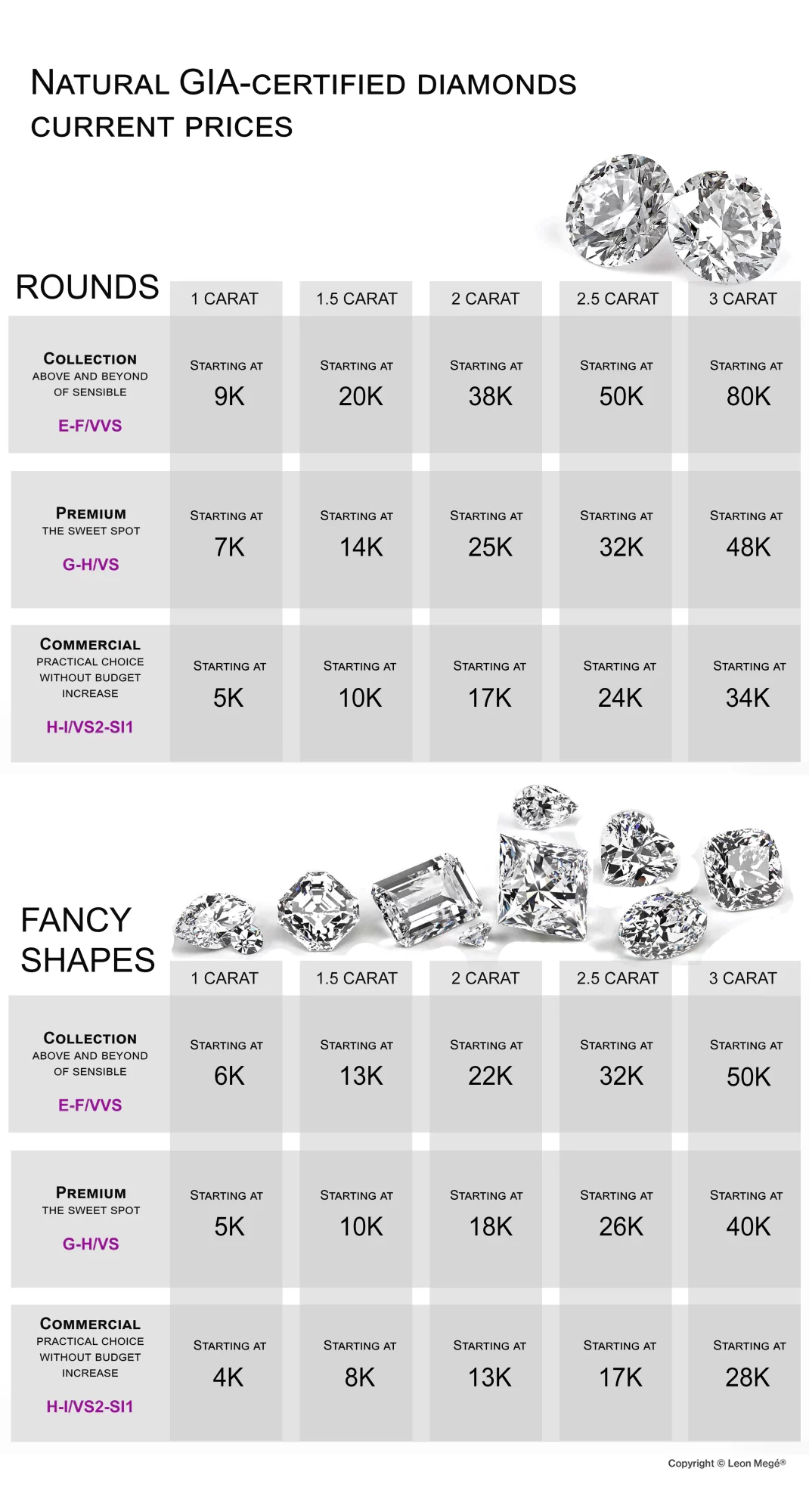

New York is the center of the Universe and the capital of the diamond world. One city block of New York’s Diamond District holds more wealth in diamonds and precious stones than most countries in the world.
Hundreds of diamond companies operate in New York. They hold extensive inventories of diamonds available for jewelers to loan on a memo and offer to consumers. There are no compelling reasons to look for stones outside of the US.
The vast inventories of finished diamonds located worldwide are listed in the database used by the diamond trade. Every company uses the International diamond database to display diamond listings. It is guaranteed that the cheapest diamond in its category on the list is located overseas. Jewelers working with overseas suppliers cannot ensure that the seller’s images, certificates, videos, and scans are genuine until the shipment has arrived. Electronic communications are prone to hacking. The documents such as certificates and invoices can be forged, tweaked, tampered or manipulated.
Is "overseas" euphemism for Indian?
When we say “overseas” supplier, we include Indian dealers and those located elsewhere in Asia and Europe. Overseas suppliers can be located in many different countries, but most are located in India – a major diamond producer, thanks to the protectionist policies of the Indian government. The great majority of Indian cutters and dealers are outstanding members of the diamond trade. Still, unfortunately, there are too many bad players taking advantage of the lax oversight and lack of enforcement. Currently, it is too risky to source stones directly from Indian suppliers, especially from smaller fly-by-night companies.


How to find out the diamond's location
A diamond located in the US can be delivered overnight. If shipping takes more than two business days, it is most likely located overseas. The lowest-priced stone in a diamond search engine is always located overseas. However, you get what you pay for. The diamond market is global, so the lower price is the result of something inferior.
People who get burned by a bad overseas stone are usually “do-it-yourselfers” who think they can outsmart the market by searching for the lowest-priced stone online. Falling prey to unscrupulous long-distance sellers is the curse of online shopping.
We sell overseas diamonds but don't recommend doing it.
We always give a solid preference to diamonds located in the US and specifically in New York. Due to our outstanding reputation in the diamond trade, we enjoy close relationships with all major diamond cutters and directly access their inventory without intermediaries.
Despite that, we can source any overseas stone and match its price.
So many ways to get burned sourcing from overseas
BMG diamonds
Unlike a color grade which is the amount of coloration, the actual hue can be other than yellow. In the BMG abbreviation, B and G stand for Brown or Green tint, negatively affecting diamond value and appearance. A diamond listed overseas at a discount is almost guaranteed to be a “brownie.”
Unfortunately, the diamond tint is not listed on a lab report. Only an experienced jeweler can identify a BMG stone.
M means Milky
Clouds, graining, and fluorescence can make a diamond look foggy or hazy. Whether or not these factors have an ill effect cannot be determined by looking at the certificate. A reputable US-based supplier will not sell a milky stone to a client without disclosure. Overseas dealers can misrepresent a stone without the risk of losing their reputation.
Forged certificates
Fake diamond certificates do not exist in the US, where laws and regulations stop such scams. However, there are unconfirmed reports of counterfeit certificates popping up in India.
All new GIA certificates have security features such as holograms, security screens, and microscopic prints that protect them from forgery or duplication. Forged certificates from other labs that do not have their databases available for instant verification are more challenging to detect.
Recycled certificates
India has a thriving market for second-hand grading reports. Elsewhere a diamond report is worthless without the diamond. A GIA diamond certificate can be sold for a whopping $50 in Surat, India, a considerable amount of money in a developing country. We hear about unscrupulous cutters matching diamonds to measurements, and the weight of orphan certificates purchased second-hand. These stones have lower color and clarity, making the diamond more valuable on paper.
The Asian Institute of Gemological Sciences (AIGS) recently issued a warning over fake gemstone reports bearing its logo. The counterfeit reports contain a working QR code that directs users to a fake website with a “.co” extension rather than “.com.”
Synthetics
A New Delhi-based firm was caught selling CVD lab-grown diamonds with certificates made for natural diamonds. The International Trading Corporation of New Delhi advertised CVD (synthetic) diamonds with a fake GIA diamond report stating that the stone is natural.
The fraud of misrepresenting synthetic diamonds as natural is widespread. Typically a forged laser inscription on a synthetic diamond identifies the stone as natural.
Matching a serial number inscribed on the diamond girdle to the online database can derail such a scam.
Stolen certificates
Recently, GIA invalidated grading reports for 1,042 diamonds submitted primarily to its India grading laboratory after someone gained access to its database and altered the grading reports.
The Diamond Trading Network has suspended 10 Indian companies for allegedly participating in a scheme that hacked into GIA’s computer system.
Theft
Wiring large amounts of money overseas is always dangerous. Even exercising caution and performing due diligence before wiring the funds, there is an inherent risk due to company transgression or rogue employees acting up.
Locked funds
It takes about a week (in the post-COVID world, even longer) for the stone to arrive. It takes time to ship the stone back if you want to return it. Even a reputable supplier willing to issue a quick refund will take time to examine the stone.
At best, it takes a few weeks to get the refund. During the wait, you are out of money and cannot take advantage of other opportunities.
You might be liable for shipping and restocking, and bank fees.
It is not worth taking the risk of saving half a percentage point.
Wire fraud
Developing countries have a higher risk of bank fraud due to lax oversight by the government and law enforcement. Jewelers receive frequent warnings through the trading network to be vigilant against hackers and swindlers. A typical scam works like this: A buying request is intercepted by a hacker gaining access to a seller’s email system. The hacker impersonates the seller and provides an authentic-looking invoice with wire instructions directing funds to their bank account once the deal is struck. Once the money is withdrawn, nothing can be done to recover the funds.

